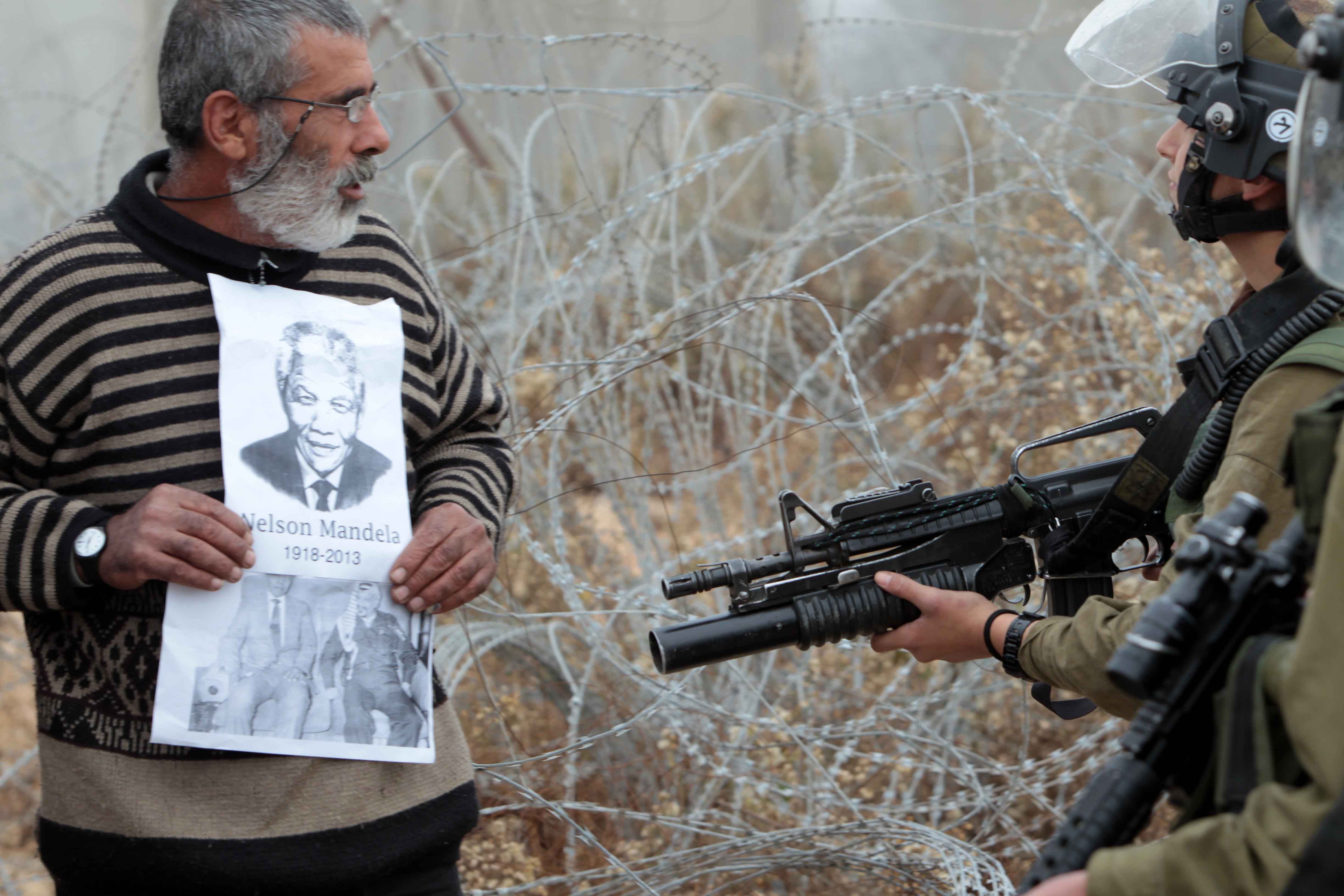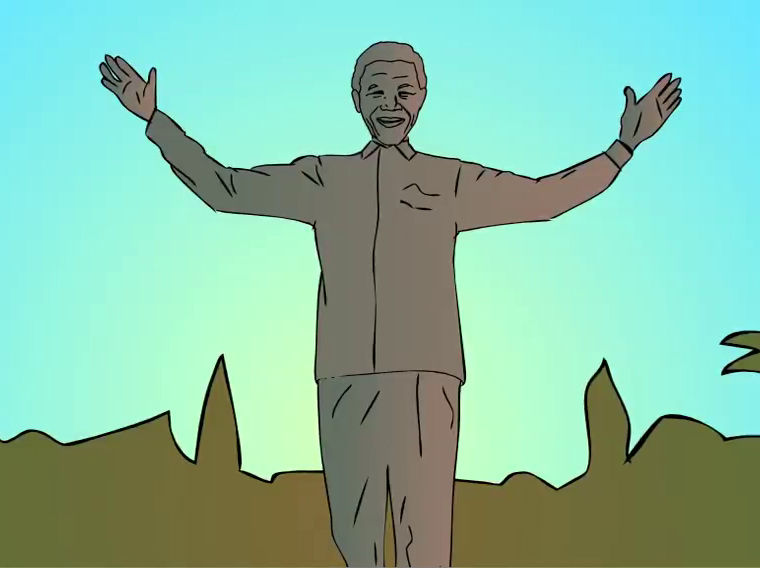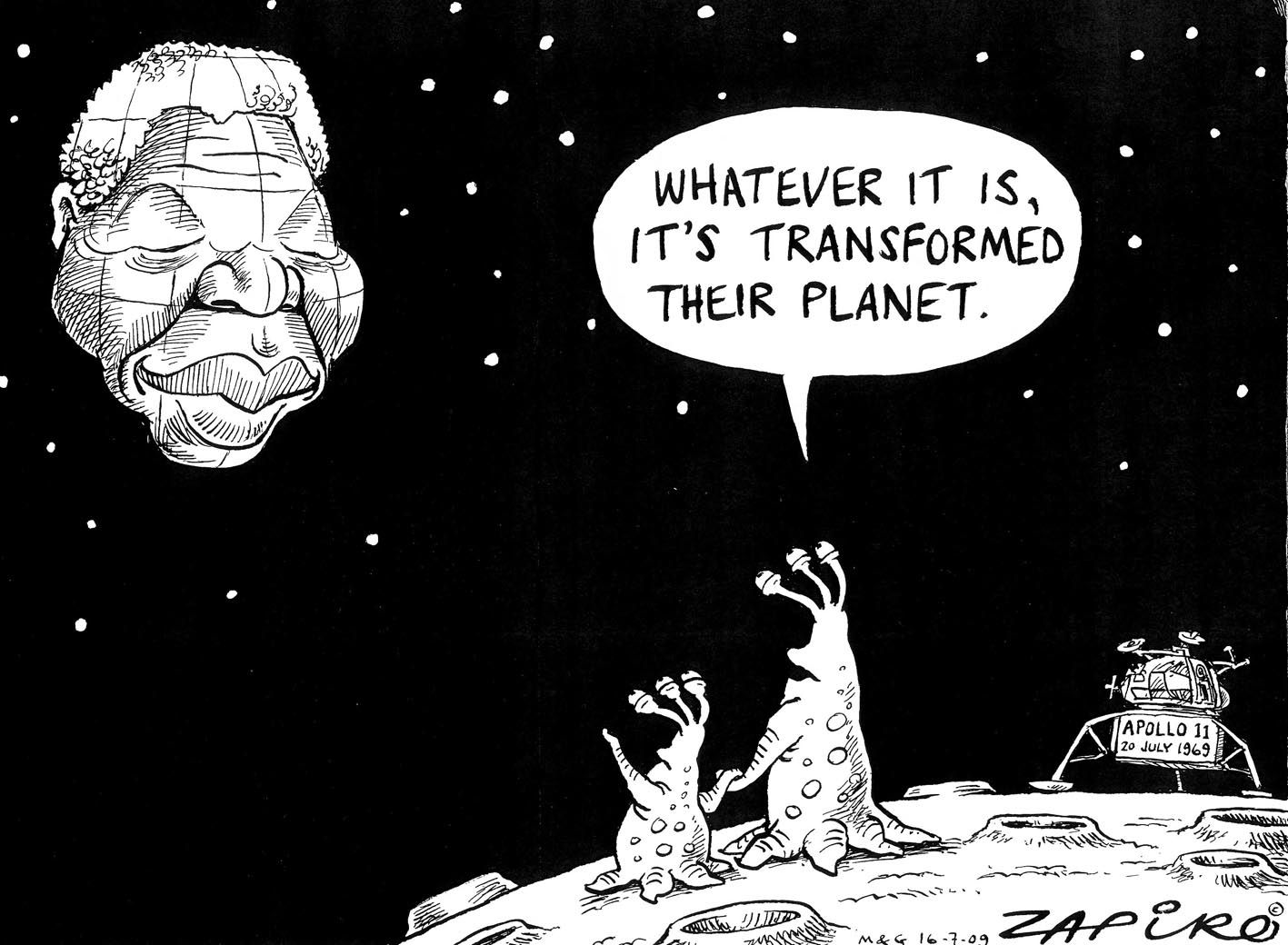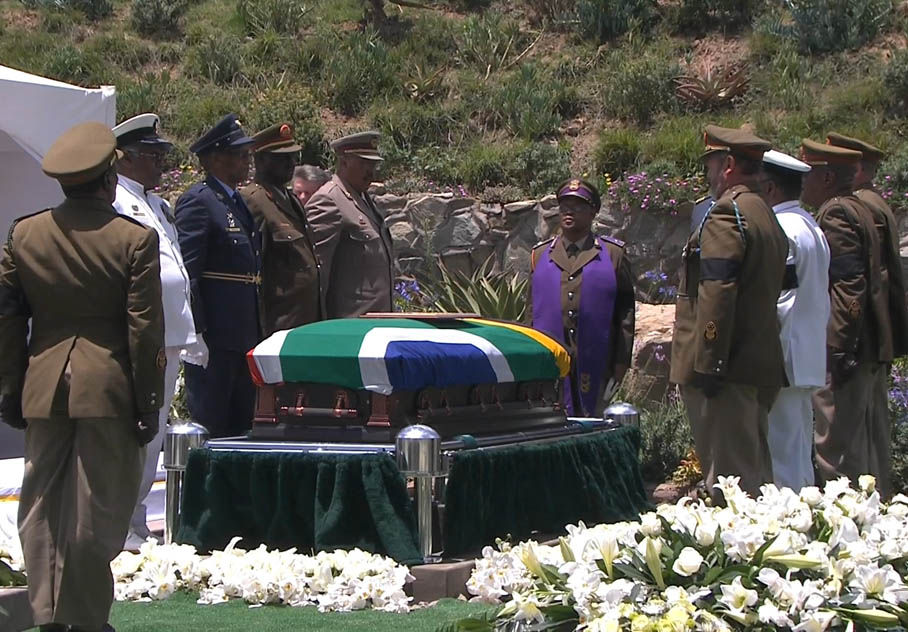
The world pays tribute to Mandela (slideshow)
As South Africans come to terms with the loss of former president Nelson Mandela, the rest of the world bids farewell to Madiba.

Pimples: Saving Madiba's rabbit (video)
Gwede, Mac and Blade try their best to stop the rabbit from whispering in Mandela's ear. But the elusive animal has some tricks up its sleeve.

Zapiro's best Madiba cartoons (slideshow)
From his toughest moments to his most triumphant, Madiba has been an inspiration. Here are some of our favourite Zapiro cartoons about him from 1994 to 2013.

Mandela: SA's greatest son laid to rest (slideshow)
The world watched as Nelson Mandela was finally laid to rest in his hometown of Qunu following a dignified and moving funeral ceremony on Sunday.
MANDELA: THE AUTHORISED BIOGRAPHY by Anthony Sampson (HarperCollins)
With South Africa's second democratic elections concluded, it is clear that the country has reached the end of an era. The coincidence of this with Nelson Mandela's retirement makes Anthony Sampson's biography very timely indeed.
The mythic stature of his subject has inevitably thrown up complications for Sampson. Critical appraisal of Nelson Rolihlahla Mandela, South Africa's first democratically elected president, is muted in these pages and most of those interviewed are fulsome in their praise.
Sampson picks up the thread of Mandela's life in a small rural village in the eastern Cape in 1918, towards the end of World War I. He was born into an African community racked by the tensions of the transition from a traditional society to a modern one. The twin influences of his early life appear to have left an indelible imprint on the young Mandela. His political thought and strategies are marked by a profound appreciation of the need to balance tradition and modernity.
Although the most visible fracture-line in South Africa was race, it intersected at key points with the equally deep one of class. The African nationalism Mandela embraced after arriving in Johannesburg in the midst of World War II was the brainchild of a Christianised, educated African lite to which his guardian had ensured the young Mandela belonged. African nationalist politicians, moderate as well as militant, dreamed of a common society in which black and white would have the opportunity to improve themselves by their own efforts and would have equality before the law. A tiny minority of their white compatriots shared this vision. These dissident whites were from a number of left-wing groups, the largest and most effective of which was the Communist Party of South Africa.
Mandela arrived on the Rand as war production and the interruption of imports from abroad had accelerated the pace of industrialisation, drawing millions of rural Africans into the cities. The anti- fascist themes of the war coalesced with industrial and community struggles to create an air of expectancy that led to the formation of the African National Congress Youth League in 1943. Mandela was among them.
Three years later, the black helots who produced South Africa's chief foreign- exchange earner, gold, came out on strike, demanding a small increase in their meagre wages. The Jan Smuts government crushed the strike with batons, bayonets and bullets, killing six mineworkers in the process. The organisers were arrested and charged with sedition.
Just as the 1922 white miners' Rand Revolt had forged an alliance between white labour and Afrikaner nationalism, the 1946 African mineworkers' strike created links between the communists and African nationalists. Notably, the communists brought to the alliance their media - a weekly newspaper, a number of journals and periodicals, a cadre of writers, journalists and trained propagandists, in addition to dedicated working-class militants.
The base of the ANC was strengthened by this infusion. And though it would continue to attract a sizeable body of support among intellectuals, the movement quickly shed its former cautious character in favour of a more militant and mass tone. It was to acquire powerful pockets of support in the towns of the eastern Cape, like Port Elizabeth. By the mid-1950s they had transformed it into a movement of activists.
It was inevitable that Mandela, like many of his colleagues, would be strongly influenced by the historicism of the communists, as well as the compelling logic of their analysis of South African and world politics. Though he never embraced Marxism, he borrowed freely from its lexicon, probably as much for effect and as a form of shorthand to convey complex concepts. Before being imprisoned, he was a man of action, with little patience for theoretical debate.
In 1962, after 20 years in active politics, he was thrown into prison, where he spent 27 years. But the portrait of Mandela that Sampson gives us is of a political late- bloomer. The prison experience consequently occupies a large part of the canvas. What shines through is not merely the remarkable resilience of Mandela and his colleagues, but, most importantly for Sampson, the growth of his reputation inside and outside the prison walls.
With his release, Mandela became the personification of his people's passionate commitment to their cause and their immense capacity for self-sacrifice.
Mandela's negotiating skills are credited with the peaceful transition from apartheid to democracy. He has won further accolades for nudging Nigeria in a similar direction, for helping the Congolese get rid of Mobutu Sese Seko and for untangling the impasse over Lockerbie.
Sampson recounts all these with great sympathy and barely concealed admiration. Yet his considerable gifts as writer and journalist have not assisted him in unveiling important dimensions of the movement to which Mandela has devoted his entire adult life
.
He has little insight into the character of the ANC and seems unable to grasp exactly the nature of this breed of women and men who provided leadership to squatters, rebellious bus commuters, striking mineworkers, militant rural women, radical peasants and students. What is distinctive about the political culture of their movement? What qualities make it possible for its adherents to engage in acrimonious debates, yet unite around commonly agreed actions, despite past differences?
This is the culture that formed Nelson Mandela. So, although this is a good biography, the definitive one has still to be written.
Mandela: The Authorised Biography will be released in South Africa in two weeks' time

